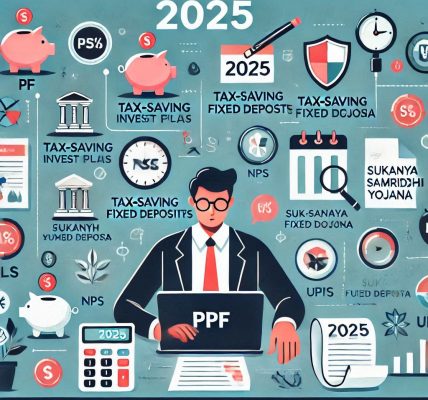Introduction
Planning for retirement is crucial to ensure financial security and a comfortable lifestyle in your golden years. Without a solid savings strategy, you may struggle to maintain your standard of living post-retirement. This guide explores the best savings plans to help you prepare for retirement effectively.
Why Saving for Retirement is Important?
- Financial Independence – Avoid dependency on family or government aid.
- Rising Healthcare Costs – Medical expenses tend to increase with age.
- Inflation Protection – A well-planned retirement fund helps maintain purchasing power.
- Peace of Mind – A strong financial cushion ensures stress-free retirement.
Top Retirement Savings Plans
1. Employee Provident Fund (EPF)
- What is it? A government-backed retirement savings scheme for salaried individuals.
- Pros:
- Tax-free interest and maturity amount.
- Employer contribution boosts savings.
- Secure and long-term wealth-building.
- Cons:
- Limited liquidity before retirement.
- Fixed interest rates that may not keep up with inflation.
2. National Pension System (NPS)
- What is it? A market-linked pension scheme designed for long-term wealth accumulation.
- Pros:
- Additional tax benefits under Section 80CCD(1B).
- Flexibility to choose asset allocation.
- Low-cost investment option.
- Cons:
- Partial withdrawal restrictions.
- Mandatory annuity purchase limits lump sum withdrawals.
3. Public Provident Fund (PPF)
- What is it? A long-term savings scheme backed by the government.
- Pros:
- Tax-free returns and maturity.
- Compounding benefits for long-term growth.
- Secure investment with no market risk.
- Cons:
- 15-year lock-in period.
- Annual contribution limit of ₹1.5 lakh.
4. Mutual Funds (Retirement-Oriented Funds)
- What is it? Investment in equity or debt mutual funds designed for retirement.
- Pros:
- Potential for high returns compared to traditional savings plans.
- Flexibility to invest in various asset classes.
- SIP option for disciplined investing.
- Cons:
- Market risk involved.
- No guaranteed returns.
5. Fixed Deposits for Retirement Savings
- What is it? Bank fixed deposits with assured returns.
- Pros:
- Guaranteed returns with minimal risk.
- Suitable for risk-averse individuals.
- Monthly payout options for retirees.
- Cons:
- Interest earnings are taxable.
- Inflation may erode real returns.
6. Senior Citizens Savings Scheme (SCSS)
- What is it? A government-backed savings plan for senior citizens aged 60+.
- Pros:
- Higher interest rates than regular FDs.
- Guaranteed returns with no risk.
- Quarterly interest payouts.
- Cons:
- Premature withdrawal penalties.
- Interest earnings are taxable.
7. Annuity Plans (Pension Plans by Insurance Companies)
- What is it? An insurance-based pension scheme offering regular income post-retirement.
- Pros:
- Guaranteed lifetime income.
- Various payout options (monthly, quarterly, yearly).
- Cons:
- Lower returns compared to mutual funds.
- Annuities can be rigid with limited withdrawal options.
How to Choose the Best Retirement Plan?
- Assess Your Retirement Goals – Estimate future expenses, including healthcare, travel, and living costs.
- Consider Risk Appetite – Choose between risk-free options (PPF, EPF) and market-linked investments (NPS, mutual funds).
- Diversify Investments – A mix of traditional and market-linked instruments ensures balanced growth.
- Start Early – The sooner you start, the more you benefit from compounding.
- Tax Efficiency – Choose plans offering tax benefits under Sections 80C and 80CCD.
Conclusion
Saving for retirement is a long-term commitment that requires careful planning and disciplined investment. By selecting the right savings plans and starting early, you can build a substantial corpus for a financially secure retirement. A diversified approach combining government-backed schemes, mutual funds, and annuity plans can help optimize returns while ensuring stability. Begin today to secure your future!



